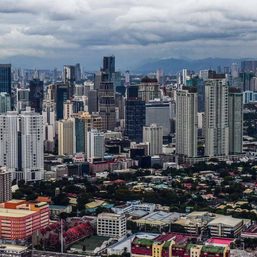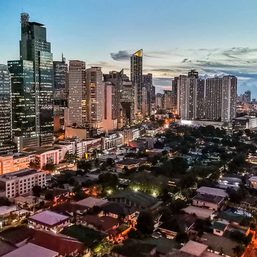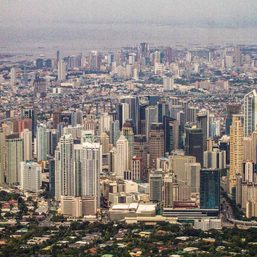SUMMARY
This is AI generated summarization, which may have errors. For context, always refer to the full article.
The government’s economic team has set an ambitious growth target for 2021, but the Philippines’ chief economist now admits that the country is unlikely to see growth until the 2nd quarter.
“To be honest, this year will be a slow start and we will ramp up by the middle of the year starting the second quarter. So let’s be realistic. In the first quarter, nothing significant has changed,” Acting Socioeconomic Planning Secretary Karl Chua said in a forum of the Foreign Correspondents Association of the Philippines (FOCAP) on Friday, January 29.
The Philippine gross domestic product contracted by 9.5% in 2020, the sharpest ever in history, even beating the debt-ridden Marcos years. It went to as low as -16.9% in the 2nd quarter, when the harshest lockdown category was enforced.
Chua did not give a figure for the 1st quarter contraction.
“We don’t have a crystal ball in NEDA (National Economic and Development Authority). I cannot tell you what is the optimal amount, but [quarter-on-quarter growth] looks very promising,” he said.
Chua said that economic activity remained tepid, even though the government has loosened up on quarantine restrictions.
Metro Manila, as well as most of the major cities in the country, remain under community quarantine restrictions, where public transportation is still limited and the number of people that go in establishments are capped.
The government’s economic team is hoping that GDP growth would hit between 7.5% to 8.5% this year, mainly due to base effects or coming off from a low point in 2020.
To achieve growth this year, the economic team is banking on legislation on reforming tax and corporate incentives, special purpose vehicles for offloading bad debt, as well as infrastructure projects. All of these have yet to materialize.
President Rodrigo Duterte’s team has also kept fiscal response conservative, despite calls for more spending. (READ: PH needs to spend big to recover from recession, but will it?)
Economic managers have also urged people to go out and “live” or “dance with the virus” but such calls have failed to entice consumer spending because of the unflattened infection curve, the record-high unemployment rate, and business closures.
The Philippines also lags in vaccine roll outs, even bested by smaller Asian economies like Bangladesh and Myanmar. (READ: In other countries, who got vaccinated first?) – Rappler.com
Add a comment
How does this make you feel?
![[In This Economy] Looks like PH economy will never get back on track. Here’s the data.](https://www.rappler.com/tachyon/2024/02/20240202-PH-economy-back-on-track.jpg?resize=257%2C257&crop=289px%2C0px%2C720px%2C720px)

![[In This Economy] Something’s broken, and it’s hidden by ‘high’ economic growth](https://www.rappler.com/tachyon/2023/11/something-broken-hidden-economic-growth-November-10-2023.jpg?resize=257%2C257&crop=276px%2C0px%2C720px%2C720px)


There are no comments yet. Add your comment to start the conversation.